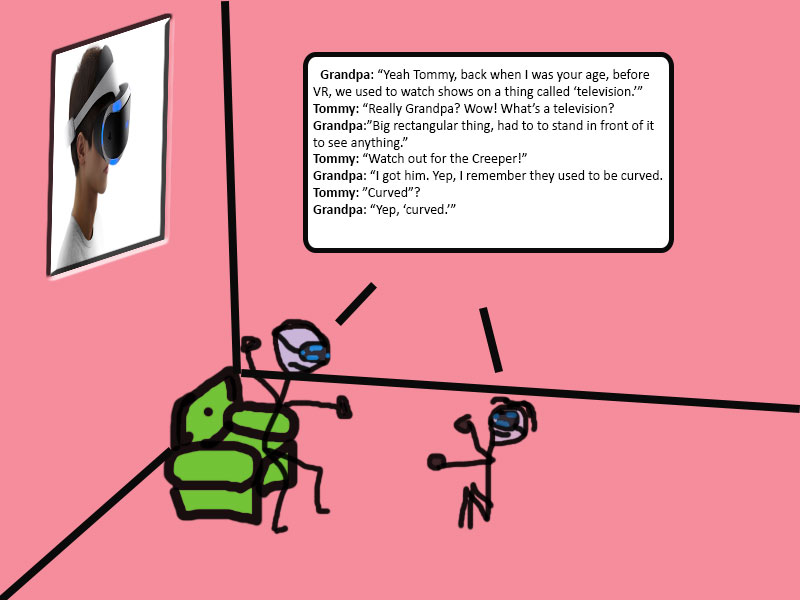
Still, if the dissolution of TV’s reign is offensive, or sounds ridiculous to you, don’t worry, you are not alone in your distress. Certainly there were many who thought TV was an unlikely heir to the reign held by radio during its so-called “Golden Age.” And yet, by the late 1940’s, “CBS, NBC, [and] ABC,” controlled dozens of TV stations across the US. Like the story of radio, the narrative of TV’s rise and impending fall are a symptom of changing tastes in technology and culture. No doubt TV, like radio, will continue to maintain its tenuous hold on the majority of viewers until VR, or the next version of VR, assumes its rightful place as the center of the household media consumption paradigm.
Whether that inauguration takes place in five or fifty years is anyone’s guess, but I would bet on the former. With four of the so-called “frightful five:” Apple, Facebook, Microsoft, and GOOGLE, committed to the success of VR as the next major media viewing innovation, the odds are good that the end of TV as king of entertainment is already well underway. And yet, the question of which appliance will accompany VR as its content delivery co-ruler, is still left unanswered. In other words, which of two primary content delivery platforms, the PC or the video media console[2], is most well suited to join the VR revolution into a position of home entertainment dominance? Which media technology is best situated to provide the graphical horsepower necessary to create a truly immersive viewing experience?
In Part II of our series, From Peripheral to Preeminence: The Rise of the Video Media Console, we will develop our theory of the reorganization of video media consumption in the household with an in depth analysis of the Console vs. PC question of preeminence. Who should take over the living room as the primary media delivery device of the household entertainment paradigm? Until then try-hards, let BOOM be your guide in everything you do. See you next month.
BOOM
[1] Even though TV manufacturers will often claim a much higher viewing angle than 45 degrees, even well above 100 degrees, (for instance, Samsung’s SUHD claims to deliver a 175 degree viewing angle), there is a difference between the FOV delivered by VR and the ‘viewing angle’ of television. For television, viewing angle is a measurement of the point at which one can view the entire on-screen picture without any off-angle interference. For VR, FOV refers to the amount of viewable content that can be observed and viewed clearly in a 360 degree space, and has nothing to do with where someone stands or sits. The quality of the picture is the same at any angle.
[2] By “video media console” we mean video gaming consoles like the PS4 and XBOX1 which have transcended their role as a single-functionality, peripheral, to become comprehensive media delivery appliances.
